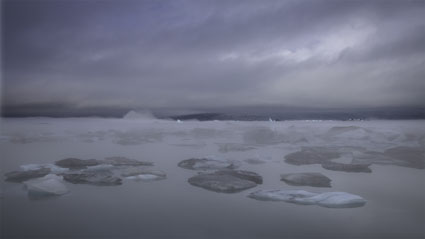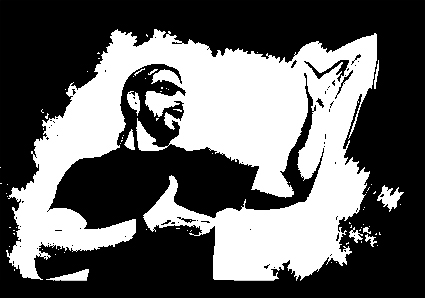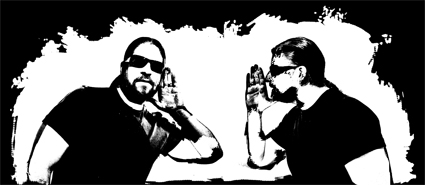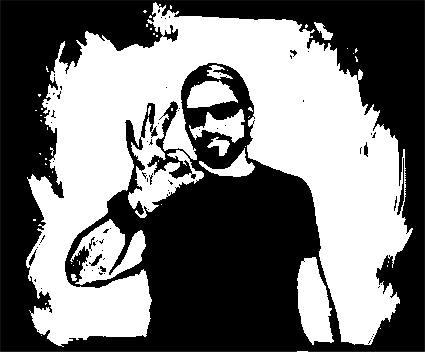Milton Glaser Draws & Lectures
MILTON GLASER DRAWS & LECTURES from C. Coy on Vimeo.
Milton Glaser speaks about drawing as a form of visual thinking.
Find more videos on creativity here.
Learn more in my creativity workshops.
?
MILTON GLASER DRAWS & LECTURES from C. Coy on Vimeo.
Milton Glaser speaks about drawing as a form of visual thinking.
Find more videos on creativity here.
Learn more in my creativity workshops.
?
Dewitt Jones offers great advice about being more creative.
Learn more about Dewitt Jones here.
Find more photographer videos here.
Sean Kernan talks about creativity and his creative life.
Find more on B&H Events here.
Learn more about Sean Kernan here.
Read my conversation with Sean Kernan here.
Read more than 40 of my conversations with photographers here.
John Cleese On Creativity
John Cleese Make Something, Even Mistakes
John Cleese On How To Put Your Mind To Work
John Cleese The Brain Explained
Find more Creativity resources here.

How do I find inspiration?
Let me count my ways.
1 Walk in nature
2 Visit a new place
3 Plan a future trip
4 Read
5 Listen to music
6 Watch movies
7 Look at artwork
8 Review my finished images
9 Review my unfinished images
10 Make new images spontaneously
11 List new creative things to try
12 Try something new creatively
13 Sketch ideas
14 Free associate
15 Brainstorm
16 Meditate
17 Daydream
18 Dream
19 Play like/with a child
How do you find inspiration?
The next time that doesn’t work, try one (or more) of these things.
I recommend you practice some or all of these things regularly.
Don’t wait to run dry.
Keep yourself overflowing all the time.
Find more resources on Creativity here.
Learn more in my digital photography workshops.

Continuity. Every screenwriter needs to create it. Every storyboard needs to interpret it. Every director needs to guide it. Every editor needs to refine it. If you’re a still photographer, you may be called to do all of these things.
Continuity lies at the heart of the art of storytelling. The types of images selected and the transitions made between images presented in groups can be powerful tools for visual communication. Sequences can provide useful comparisons and contrasts between separate images and their contents. They set a pace and rhythm for looking. Carefully orchestrated they can create the illusion of moving in time forward or backward, linearly or non-linearly. They can be used in extremely creative ways. The best sequences make images clearer, more meaningful, and more moving.
Photographers can use continuity to guide and structure initial explorations on site; use a storyboard as a checklist to make sure no angle goes uncovered. Photographers can use continuity to find missing gaps or resolve challenging transitions in ongoing projects; update a storyboard and find the out what you’ve got too much of and what you don’t have enough of or find a bridges to connect disparate images. Photographers can use continuity to edit, sequence, and present existing work more effectively; fine tune a story in sophisticated and compelling ways; there are many possible solutions.
There are many classic strategies for sequencing images and creating transitions between them.
Persistence
Pans
Zooms
Fades
Numbers
Cuts
Include continuity in your work and you’ll find you’ll be able to solve many more visual challenges in many more ways and make the reception of your work more effective and powerfully felt. Once you understand what the many possibilities are and how they work, you can be extremely creative with them. Some artists have even been celebrated more for their use of continuity than their singular images. Continuity is so powerful that it can be an art in and of itself.
Read more on AfterCapture.
Learn more about storytelling here.
Learn more in my digital photography workshops.
People often credit their ideas to individual “Eureka!” moments. But Steven Johnson shows how history tells a different story. His fascinating tour takes us from the “liquid networks” of London’s coffee houses to Charles Darwin’s long, slow hunch to today’s high-velocity web.
Find more of my favorite TED videos here.

Recently, I was leading a workshop in Joshua Tree National Park. We’d come to a place called White Tank for evening light. Perched high on a cliff, I looked down into the surrounding valley and saw a young woman wandering through magnificent boulders and fabulous cacti. She was drifting slowly, almost aimlessly through the scene with her right hand raised in the air – singing. As the sound drifted through the sun drenched evening air, I couldn’t tell if she was singing a children’s song or an African chant. She was utterly unselfconscious and seemed completely absorbed in the moment. Her moment helped me appreciate my own more. I wondered, “Why we don’t all give ourselves more license to sing?” Children do it. Adults often don’t. We compare ourselves to professional singers.We grow self-conscious. We become silent. We forget to sing. What if we spontaneously sang more? Would we come to know our voices better? What if we allowed ourselves become completely absorbed in the moment more frequently? Would we appreciate the passing of each moment more? Would we find ourselves appreciating the things around us more? Why wouldn’t we do these things? Are the reasons we give ourselves for not doing these things as helpful as the reasons we can find for doing them? Why not sing more? What is the truest sound for this moment? Go ahead. Make a noise. It doesn’t have to be perfect. It just has to be real.
Find more inspiration in my Creativity Lessons.
Learn more in my Digital Photography Workshops.

Talk to yourself. Don’t worry, it’s not crazy. We all do it. Speaking your mind can help you become clearer about what’s on it. It’s your choice, whether you decide to speak your mind silently in your head or speak your mind out loud, either alone or under the right circumstances in the presence of others. No one ever has to know how much you talk to yourself; they rarely know how much they talk to themselves. Everyone has an ongoing internal dialog. We see things, we hear things, we feel things, we do things, we react, and all the while we interpret what we’re experiencing. It takes years of training not to do this. Most of the time, we’ve become so accustomed to the familiar voice inside of us that we’re often unaware of what’s being said and who’s saying it. It seems natural to us. That’s just the way it is. But, in reality, that’s the way we are. If we actively listen to ourselves, we become more self-aware and realize we have many more choices available to us.
We may even come to realize that we have many different voices within us – aspects of ourselves that can be seen as being distinct from one another; a child, a warrior, a lover, a dreamer, a scientist, etc. We can make the life of our inner community richer and more dynamic by encouraging these separate voices to speak in turn and even to speak to each other. Over time we may even discover that each voice has a consistent set of concerns and perspectives and knowing this can help us decide which voice to call on in a given situation. This imaginative exploration can be extremely revealing. We not only come to better understand ourselves and what makes us truly unique, we also come in contact with vast sources of information and understanding that we often leave untapped. The best thing about listening to our selves is that we come to realize we have many more perspectives to draw from and opportunities to choose from than we had previously imagined.
If you really want to learn a lot, put a neutral moderator in charge of these conversations. His or her job is simply to listen and observe non-judgmentally. Nothing shuts down communication faster than criticism. At times your moderator may direct specific questions or make a motion to move on to other subjects. Later, when all is said, you can weigh the evidence, draw conclusions, and make decisions about what’s to be done or not done.
We all want to be heard. When was the last time you wished you had someone to listen to you? When was the last time you listened to yourself?
Go ahead, speak what’s on your mind. Who knows? Other people may want to hear what you have to say.
Find more inspiration in my Creativity Lessons.
Learn more in my Digital Photography Workshops.

“If someone in your life talked to you the way you talk to yourself, you would have left them long ago.” – Carla Gordon
We’re told that to improve and reach our full potential that we have to be our own worst critics. There is a time and a place for this – but it’s limited. Don’t make it a full time occupation. If you do, you may never get there.
Professional athletes have coaches who not only train them but also encourage and inspire them as well. When was the last time you coached yourself? Even if you’re lucky enough to find a creative coach (they’re in extremely short supply), they can’t do all the work, you too have to do some of it. You can’t afford to wait and find your perfect creative coach. Instead, become that person.
Energize yourself. Affirm your abilities. Set tangible goals. Provide yourself incentives. Reward yourself. Celebrate your accomplishments. It will help if you give yourself specific feedback and focus on concrete results. If you don’t have any accomplishments to speak of yet, frequently use positive affirmations until you do – and continue doing so afterward.
When you talk about yourself or your work, do you use positive or negative words? Many times, when we speak about ourselves as artists and our work, we downplay our abilities and accomplishments. It’s true that no one likes a raving egomaniac. But, there’s a real difference between arrogance and confidence. Confidence is attractive and inspiring; arrogance isn’t; neither is insecurity. Don’t let your insecurities get the best of you. Be careful not to talk yourself down, cut yourself off short, or fall completely silent. Instead, learn to speak simply and directly about yourself and your work, sharing your enthusiasm for your subjects and your medium.
Not feeling it? Act as if you do. With just a little practice you will begin to feel it. Practice makes perfect. And the right coach can help guide you to perfect practice.
Find more inspiration in my Creativity Lessons.
Learn more in my Digital Photography Workshops.